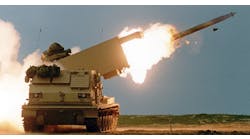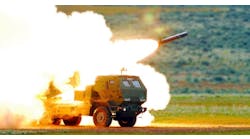Rolls-Royce reports it completed a successful fueled test of a small gas turbine it has developed to power hybrid-electric flight. The turbine is part of a more complex turbogenerator package that Rolls is developing for the Urban Air Mobility (or “air taxi”) market segment, which includes electrical vertical take-off and landing (eVTOL) or electric short take-off and landing (eSTOL) aircraft, and smaller commuter aircraft.
Currently, the project is proceeding by using sustainable aviation fuels as a complement to electric battery-powered systems.
According to Rolls, the fuel test confirmed the effectiveness of its compact, power-dense turbine design. It noted that the turbogenerator system will integrate concepts for lightweight high-speed rotating electric machines and high-efficiency gas turbines.
In use aboard an aircraft, the turbogenerator system Rolls is developing will complement an electrical propulsion package by offering scalable power (500 to 1,200 kW) from sustainable aviation fuels – and eventually through hydrogen combustion – that would allow the aircraft to undertake longer routes than electric battery-powered aircraft can accomplish currently.
“The first fuel burn of our brand-new small gas turbine is a significant leap forward with successful stages throughout the test from light-up to the pull-away of the system,” offered Matheu Parr, custom director, electrical, for Rolls-Royce.
“This significant achievement follows the fast-paced development time of the new gas turbine from concept freeze to ‘pass to test’ in under two years,” Parr detailed. “The turbogenerator system will enable our customers to extend the routes that electric flight can support and means more passengers will be able to travel further on low and potentially net zero emissions aircraft.”
Test facilities and equipment for 14 subsystems were designed and built (or adapted) over the past year, and the test set-up incorporates commodity components like valves and hoses, along with customized subsystems such as the fuel injection systems, oil and ventilation systems, engine mount, and water brake that were made-to-order for the requirements of the turbogenerator concept.
The fuel tests produced relevant data and insights to verify technical details of the design, which will allow for design adaptations for the next series of tests.






